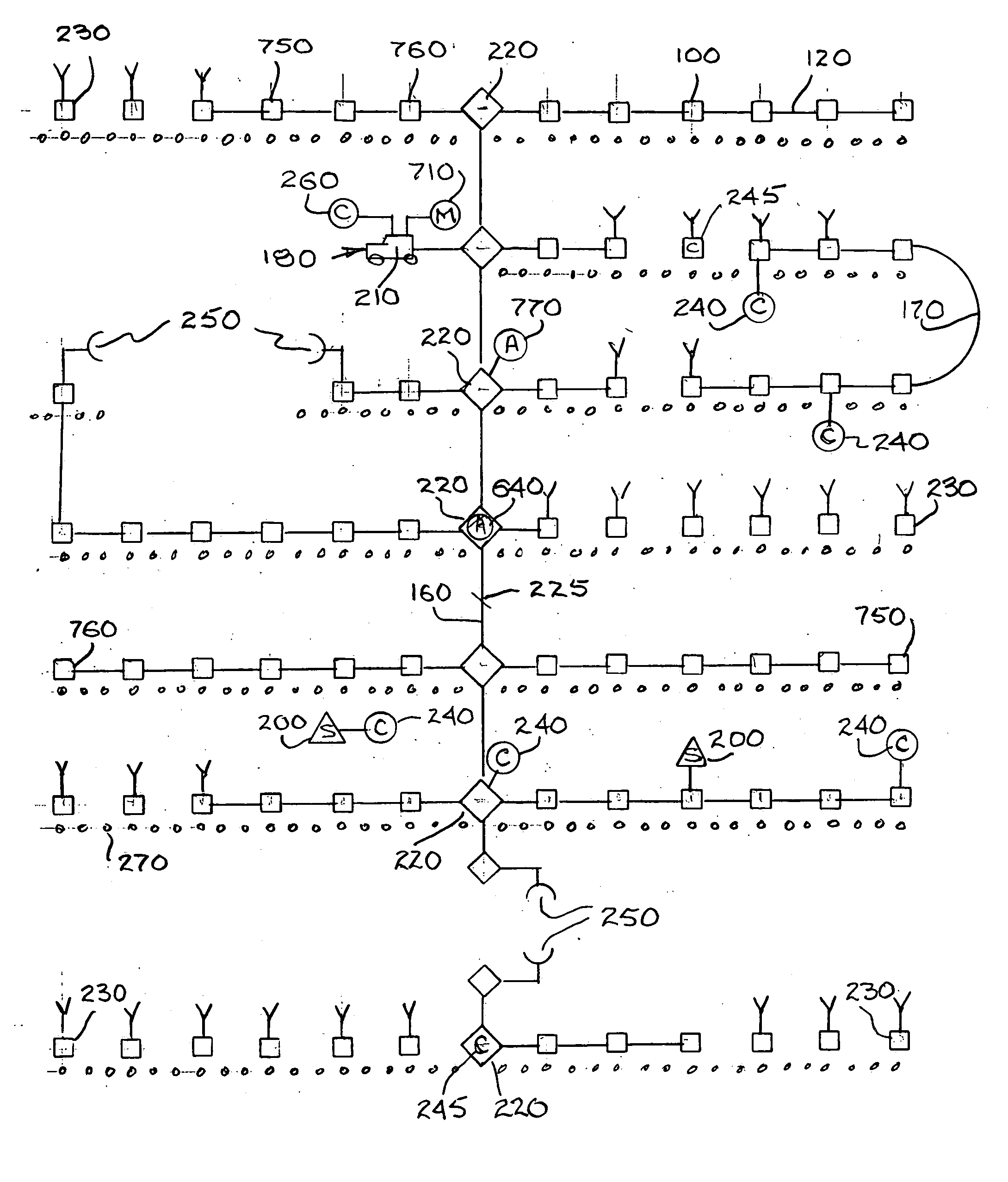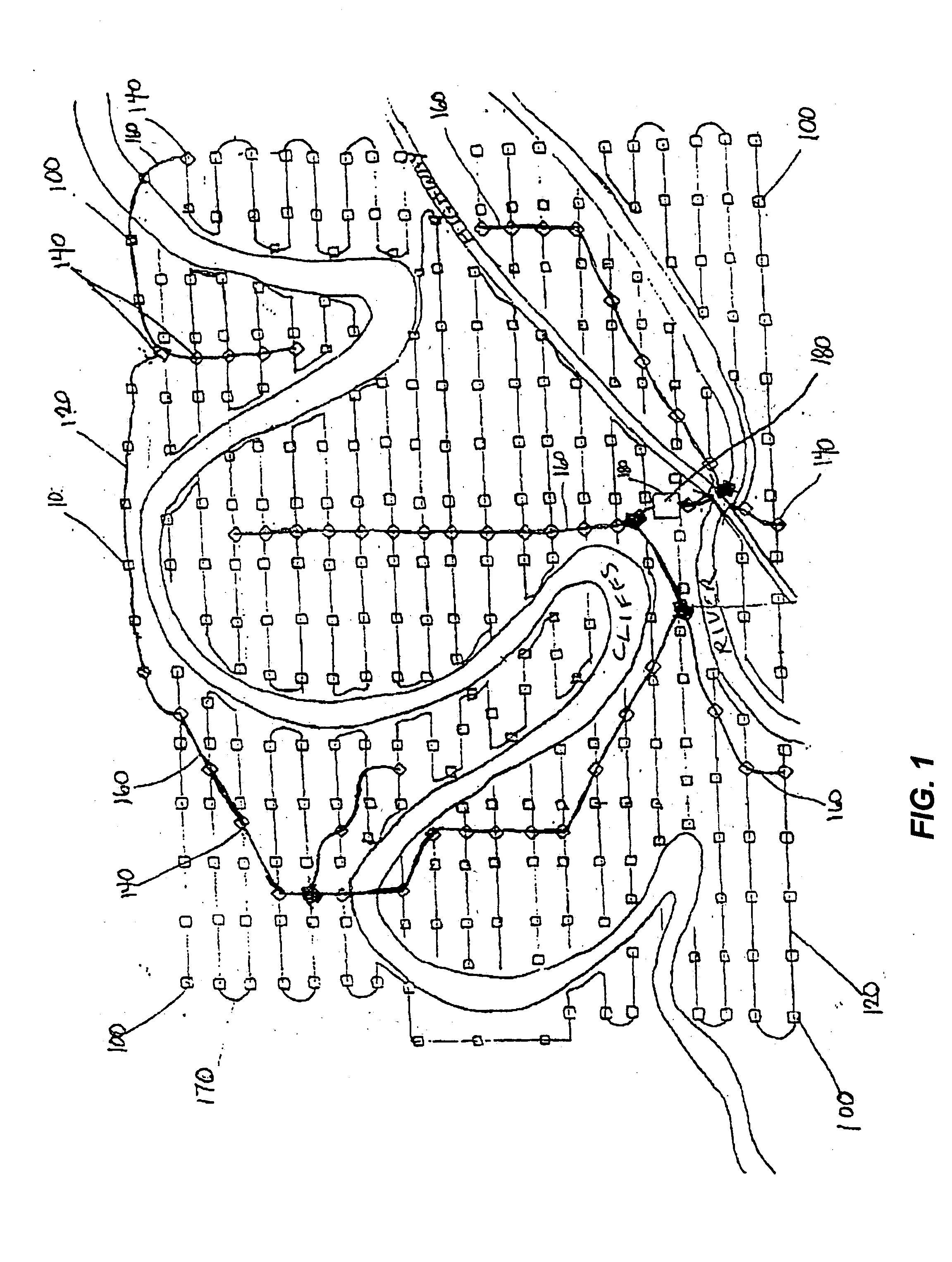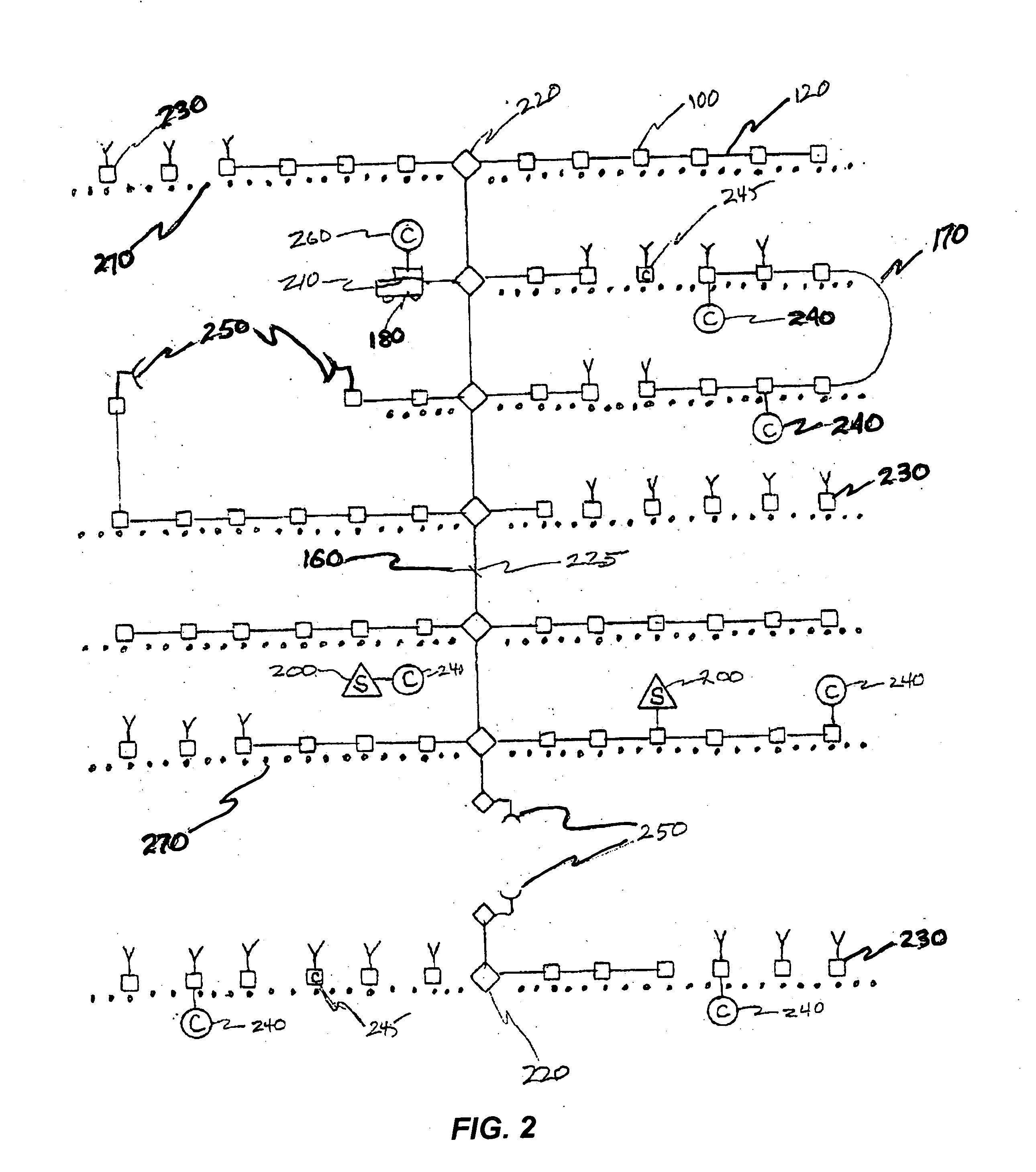Synchronization and positioning of seismic data acquisition systems
a seismic data and acquisition system technology, applied in the field of seismic survey equipment, can solve the problems of affecting the image quality of subsurface geologic layers, the accuracy of timing accuracy of recorded data, and the need for very accurate time-based time-based time-based time-based measurement of seismic vibrations of the earth, so as to facilitate the improvement of synchronization, less transmission delay, and tight statistical distribution of transmission times
- Summary
- Abstract
- Description
- Claims
- Application Information
AI Technical Summary
Benefits of technology
Problems solved by technology
Method used
Image
Examples
Embodiment Construction
[0035] For reference, a typical seismic survey grid is shown schematically by FIG. 1 to include a large number of remote acquisition modules (RAMs) 100 having orderly connections along receiver lines 120 to respective line tap units 140. Line tap units (LTUs) 140 connect receiver lines 120 to base lines 160. The base lines 160 connect ultimately to the central recording unit (CRU) 180. Jumpers 170 connect ends of receiver lines 120 to form loops. RAMs 100 perform functions of collecting seismic sensor array signals, digitizing these signals if they are not already digitized within the arrays, and transmitting the data toward the CRU 180. Also the RAMs 100 receive communications originated by the CRU 180 and by more remote RAMs 100 and relay this information to adjacent RAMs 100 or LTUs 140.
[0036] Seismic sensors are connected to the RAMs 100 and may be of one or more types of transducers such as geophones or hydrophones. Sensor arrays may range from single sensors to multiple senso...
PUM
 Login to View More
Login to View More Abstract
Description
Claims
Application Information
 Login to View More
Login to View More - R&D
- Intellectual Property
- Life Sciences
- Materials
- Tech Scout
- Unparalleled Data Quality
- Higher Quality Content
- 60% Fewer Hallucinations
Browse by: Latest US Patents, China's latest patents, Technical Efficacy Thesaurus, Application Domain, Technology Topic, Popular Technical Reports.
© 2025 PatSnap. All rights reserved.Legal|Privacy policy|Modern Slavery Act Transparency Statement|Sitemap|About US| Contact US: help@patsnap.com



